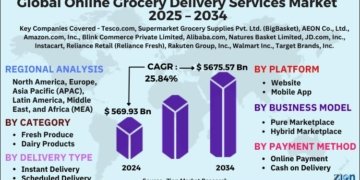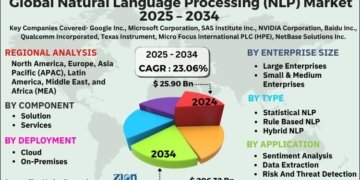The global Automatic Identification System (AIS) market is on a trajectory of significant expansion, projected to grow from an estimated USD 304.6 million in 2025 to a robust USD 613.3 million by 2035, registering a Compound Annual Growth Rate (CAGR) of 7.2% over the forecast period. This substantial growth is primarily driven by the increasing demand for real-time ship monitoring, advanced collision avoidance systems, and stringent compliance with evolving maritime regulations.
An automatic identification system (AIS) is a crucial tool in ship-to-ship and ship-to-shore maritime communications, enabling real-time identification and tracking of vessels. The technology operates through transponders that transmit vital data such as vessel position, speed, course, and identification information to nearby ships, coastal stations, and even satellite systems. This continuous, accurate information significantly enhances safety at sea, facilitates collision avoidance, and improves overall traffic management. The integration of cutting-edge technologies like artificial intelligence (AI)-powered data analytics and machine learning is further bolstering communication and surveillance functionalities within the marine industry, leading to enhanced navigation and improved operational performance. Organizations are increasingly leveraging cloud-based AIS solutions, predictive analytics, and automated alerts to ensure effective fleet management and maintain safety at sea. These trends, coupled with a growing focus on environmental monitoring, cybersecurity, and integrated data solutions, are collectively contributing to the market’s expansion.
Thorough Market Evaluation: Full Report
https://www.futuremarketinsights.com/reports/automatic-identification-system-market
Regulatory Mandates and Technological Advancements Fuel Growth
The global AIS industry is experiencing rapid growth due to increasing maritime security concerns, rising ship traffic, and stricter regulatory requirements from influential organizations like the International Maritime Organization (IMO). AIS technology is indispensable for collision avoidance, efficient ship tracking, and streamlined maritime operations. AIS device producers are emphasizing high precision, regulatory compliance, and seamless compatibility with existing navigation systems. Marine applications, including commercial shipping, naval defense, and fisheries, prioritize compliance and consistency to ensure safe and efficient operations. Distributors are focused on maintaining consistent supply chains, while end-users such as ship operators, coast guards, and port authorities demand cost-effective and reliable AIS solutions.
Key trends are shifting towards the widespread deployment of satellite-based AIS (S-AIS) for global vessel tracking, advanced maritime analytics powered by AI, and comprehensive IoT and big data integrations. While challenges such as high investment costs and vulnerability to cyber risks persist, the growth of automation and big data analytics is fueling industry-wide increases in AIS adoption. Recent strategic acquisitions and high-value government contracts underscore this dynamic market. In November 2024, Kpler’s acquisition of Spire Maritime, a ship tracking firm, for approximately USD 240-250 million significantly enhanced Kpler’s maritime analytics capabilities. Similarly, Orbcomm secured a contract with the USA Coast Guard in October 2024 (approximately USD 50-70 million) to upgrade its AIS-based vessel tracking system, and exactEarth renewed its AIS data services contract with the European Maritime Safety Agency (EMSA) in August 2024 (approximately USD 30-40 million).
Future Trends: AI-Driven Autonomy and Quantum Security
The period between 2020 and 2024 witnessed rapid expansion in the AIS market, driven by growing maritime security concerns, regulatory mandates, and advancements in vessel tracking technology. Governments and shipping companies widely adopted AIS to enhance navigation safety, optimize fleet management, and comply with IMO regulations. Satellite-based AIS provided extended coverage, while AI-powered analytics improved fuel optimization, maintenance forecasting, and routing.
Looking ahead to 2025-2035, the development of AIS will be characterized by autonomous navigation with AI-governed ships, quantum cryptography communication, and decentralized seagoing information networks. Intelligent ports and green shipping lanes will integrate AIS with emissions tracking, automatic berthing, and blockchain-based ship registries. Edge computing will deliver improved vessel-to-vessel communication and enhanced situational awareness. Enhanced cybersecurity norms and AI-facilitated anomaly detection will ensure data integrity, and sustainability-focused AIS applications will lead the maritime sector toward net-zero emissions.
Competitive Landscape: Key Players Drive Innovation and Market Share
The automatic identification system market is intensely competitive, driven by regulations ensuring safe sailing and the need for real-time vessel tracking, enhanced satellite-based navigation, and their widespread proliferation. The growth has been notably observed in the adoption of AIS for collision avoidance, fleet management, and compliance with environmental standards across commercial shipping, defense, and offshore industries.
Major players such as Saab AB, ORBCOMM, exactEarth, Furuno Electric Co., Ltd., and Garmin Ltd. dominate the competition with their sophisticated AIS transponders, satellite-based AIS services, and AI-based maritime analytics. These companies are continuously investing in AI-based data analytics and cloud-enabled tracking platforms, alongside next-generation AIS technologies that interface with IoT and cybersecurity frameworks. Companies enhancing in-orbit satellite AIS capabilities and improving data accuracy to build more global coverage will secure a strong position in the industry. Saab AB holds an estimated 20-25% market share, followed by Orbcomm (15-20%) and exactEarth (12-17%).
Regional growth further highlights market opportunities: The USA AIS market is projected to grow at an 8.7% CAGR, driven by the surging need for AI-driven AIS solutions. The UK AIS market is slated for an 8.4% CAGR, fueled by digital navigation systems and smart port initiatives. The EU AIS industry will grow at an 8.6% CAGR, propelled by stringent maritime safety regulations. Japan’s industry is poised for an 8.5% CAGR, with investments in high-precision AIS technology. Finally, the South Korean AIS industry is set to grow at an 8.9% CAGR, driven by government investment in digital shipping infrastructure and AI-based navigation solutions. These regional dynamics, coupled with continuous innovation and strategic partnerships, will shape the future of the global AIS market.
Get Ahead with Our Report: Request Your Sample Now!
https://www.futuremarketinsights.com/reports/sample/rep-gb-1096
Explore adjacent markets through our in-depth related reports.
Automatic Dicing Saw Market
https://www.futuremarketinsights.com/reports/automatic-dicing-saw-market
Automatic Filling Machine Market
https://www.futuremarketinsights.com/reports/automatic-filling-machine-market
Automatic Capping Machine Market
https://www.futuremarketinsights.com/reports/automatic-capping-machine-market
Future Market Insights Inc.
Christiana Corporate, 200 Continental Drive,
Suite 401, Newark, Delaware – 19713, USA
T: +1-845-579-5705
For Sales Enquiries: sales@futuremarketinsights.com
Website: https://www.futuremarketinsights.com
Future Market Insights, Inc. (ESOMAR certified, recipient of the Stevie Award, and a member of the Greater New York Chamber of Commerce) offers profound insights into the driving factors that are boosting demand in the market. FMI stands as the leading global provider of market intelligence, advisory services, consulting, and events for the Packaging, Food and Beverage, Consumer Technology, Healthcare, Industrial, and Chemicals markets. With a vast team of 400 analysts worldwide, FMI provides global, regional, and local expertise on diverse domains and industry trends across more than 110 countries.
This release was published on openPR.


















